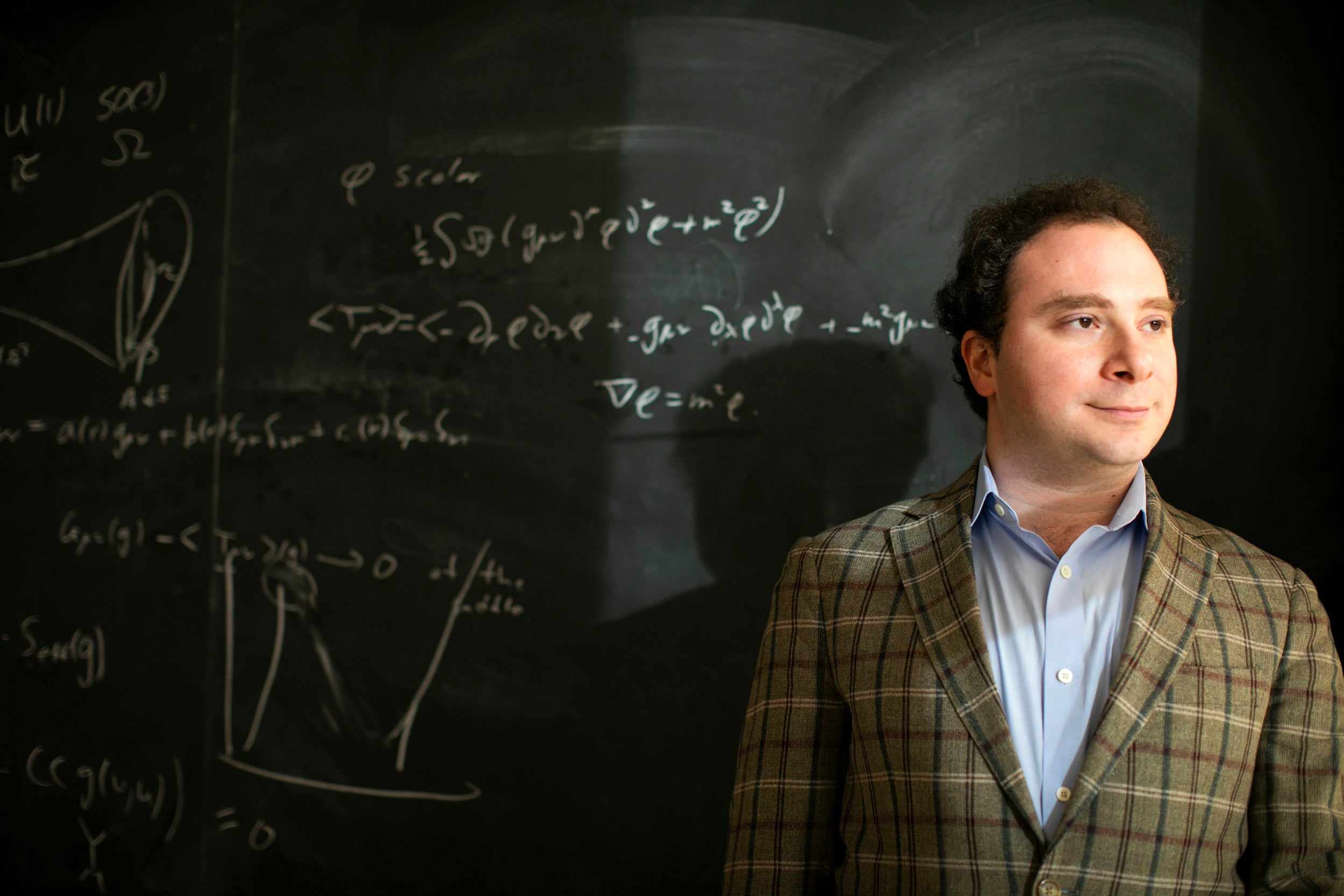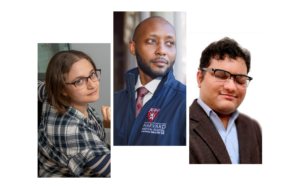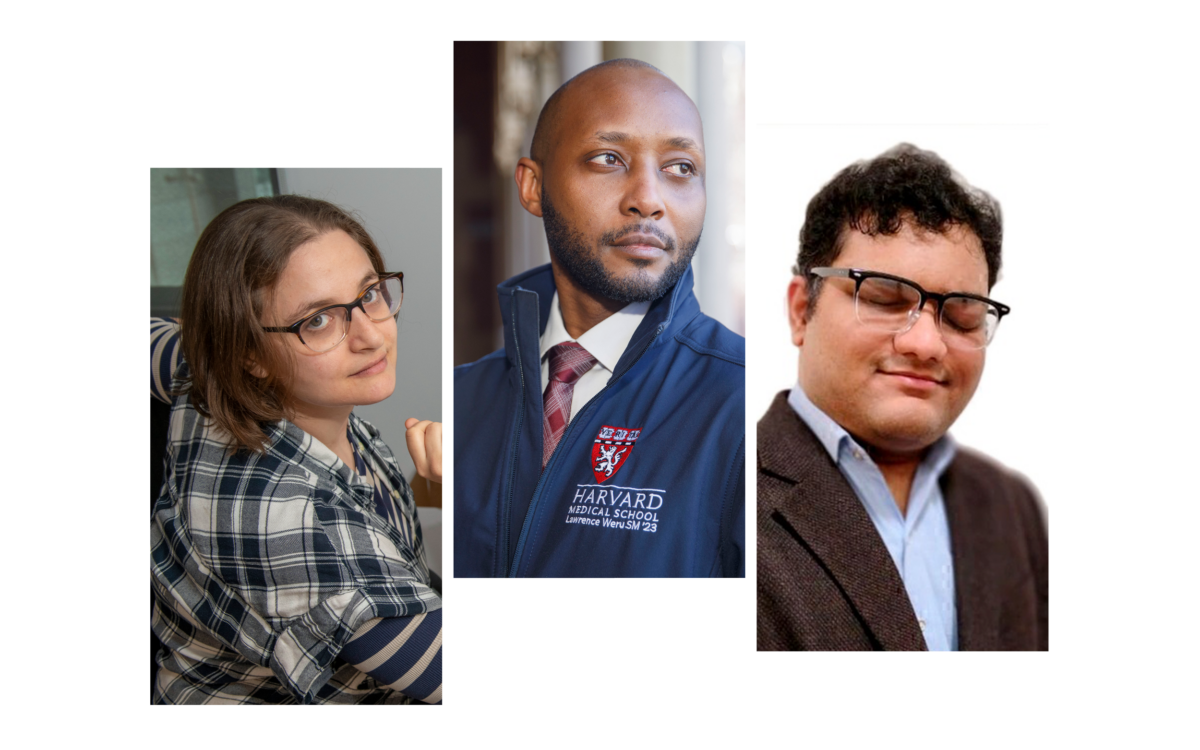
Daniel Jafferis’ team has for the first time conducted an experiment based in current quantum computing to understand wormhole dynamics.
Stephanie Mitchell/Harvard Staff Photographer
One small step toward understanding gravity
Quantum computing simulation reveals possible wormhole-like dynamics
Complete understanding of many of the most fundamental forces at play in our world has proven slippery. A new experiment by a group of researchers, including Daniel Jafferis of Harvard’s Department of Physics and peers from Caltech, represents a small step in advancing our view of the relationship between gravity, which shapes the universe, and quantum mechanics, the theoretical framework governing the motion and interaction of subatomic particles.
For more than 100 years, the common description of gravity has stemmed from Albert Einstein’s theory of general relativity — that gravity relates to the curvature of space-time. In the last 25 years scientists have discovered there is an intimate connection between gravity and quantum mechanics. Among these connections are wormholes, also known as bridges or tunnels of space, which Einstein described in 1935 as passages through space-time that could connect two black holes.
Jafferis’ team has for the first time conducted an experiment based in current quantum computing to understand wormhole dynamics. “It is a quantum simulation of an extraordinarily tiny wormhole,” said Jafferis. “Before this, it was not clear with the devices we have now if one could do it at all.” The research was published in Nature.
Einstein’s general relativity theory described wormholes as two black holes whose interiors are joined, where something could jump in each side, meet in the middle, but neither could get out again — the proverbial trap in a black hole.
“It’s a beautiful idea from the 1930s that wormhole interiors are joined, but it has not been known if this concept is an operationally meaningful statement,” Jafferis said. “But now we know that wormhole configuration does indeed have a physical interpretation; it corresponds to the two separate black holes in a highly entangled space.”
In recent years, scientists have built physical devices like quantum computers to create simulations in which they can manipulate the entanglements of quantum states in a controlled way. Jafferis’ team wanted to see whether they could create a simplified model that would emulate the gravitational aspects of a wormhole. Could they make a quantum system where the pattern of space entanglement is structurally of the right sort so that it looks like sending something through a wormhole?
In lab experiments, the researchers introduced a connection between the two sides, making the wormhole traversable. Signals could be sent in one side and come through the other, maybe not quickly, but without getting stuck. In the quantum language this is called “quantum teleportation,” a way of sending quantum information using shared entanglement. “The information is not sent through the direct signal, but in a more subtle way that uses entanglement,” Jafferis added.
The team started with a qubit, the simplest kind of quantum space, in one area of their device. They released other qubits in another fixed entangled space within the computer for a total of nine qubits. The two spaces were then mixed using the gate operations of the quantum computer.
Next, they used data operations that interpreted the evolving system according to certain dynamics. The final step was looking at the qubit once it reached the other side of the computer. “We asked if it was the same as the one we sent in or if it looked different,” said Jafferis. “It was the simplest possible quantum circuit we could create to see if we could simulate wormhole dynamics.”
The team’s ultimate goal is to learn all the details about the gravitational description of quantum systems. “We know how that works through theoretical mathematics in limited cases, but we don’t know all the answers,” said Jafferis. “Using this very small quantum system, we see it as a first step toward making bigger ones where we can discover more.”
This research was funded the U.S. Department of Energy Office of Science.




